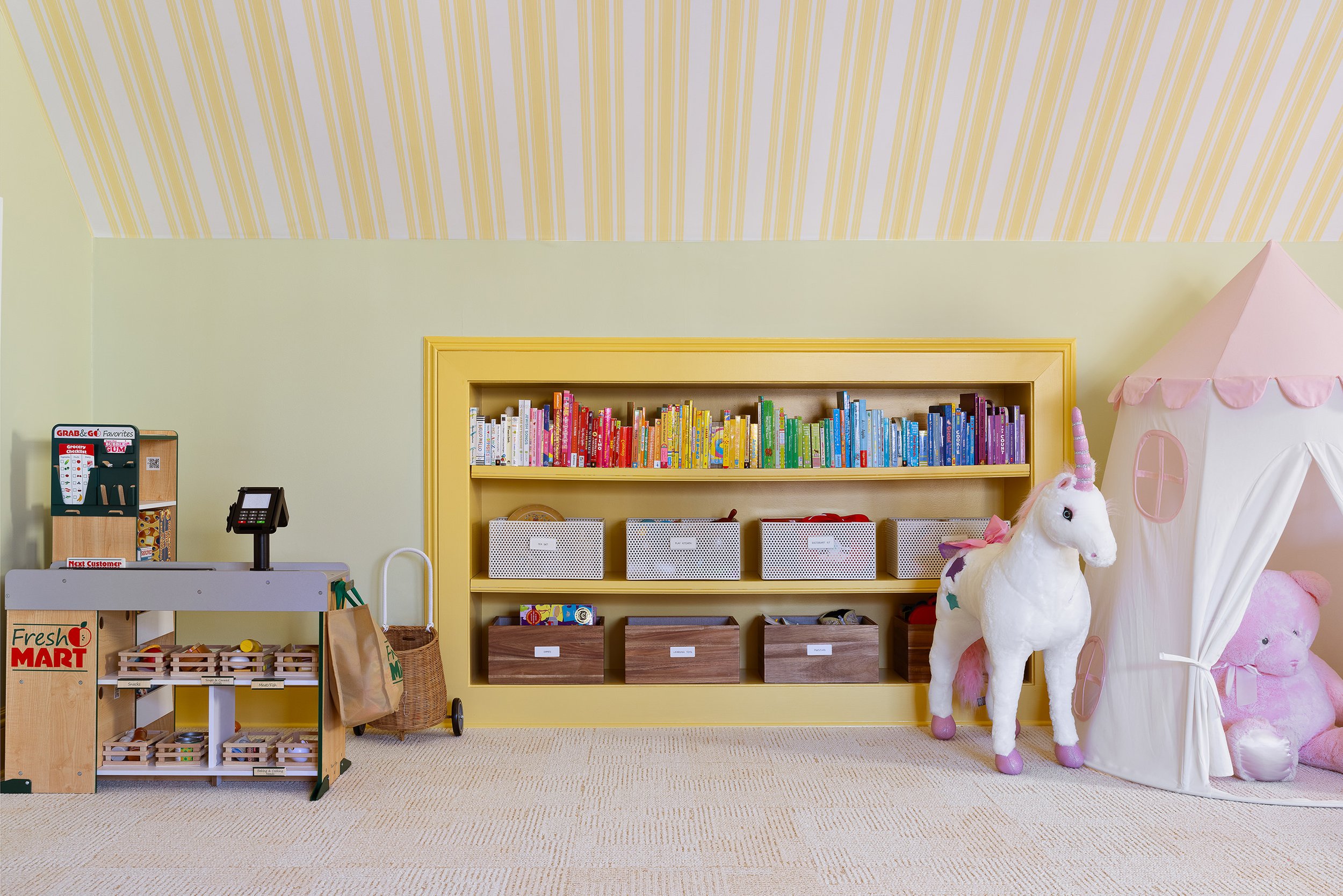Q&A NEAT Method: How to Organize Kids’ spaces
Photo by Donna Dotan
No matter the time of year, one thing is clear: you can always find a new hack when it comes to cleaning and organizing for the littles. You may be asking yourself: What’s the best way to organize their clothes and shoes? How do you keep all of the toys in line? What about the myriad arts & crafts projects with one million (infuriatingly tiny) pieces? Or the board games that never seem to stay in one box? (Trust us, we’ve been there.)
Luckily, AO got down to the nitty gritty on kid’s organizing and partnered with NEAT Method in her own home to pare down and organize the playroom, with amazing results that are easy to maintain (the key, in our opinion.) We asked the Co-Founders of the NEAT Method (our trusted source on all things organization), Ashley Murphy (CEO) and Marissa Hagmeyer (COO), to share all of their best tips and tricks for you to feel in control and ready to take on your mini’s space.
Photo by Donna Dotan
What is the NEAT Method?
Ashley: NEAT Method was launched in 2010 to transform the organizing industry as we know it, offering a fully customized, turn-key service that had never been offered in the category before. These services include space planning, purchasing, and implementing organizing solutions, with a goal to elevate our clients' lifestyles and bring a sense of peace and calm. Since launch, we have grown to reach over 100 markets across the US and Canada.
In 2020 we took our organization offerings one step further, introducing our very own product collection to coincide with our systems, providing the perfect balance of aesthetics and function.
Organizing a child’s space can feel really overwhelming. Where do you suggest someone start?
If you’re feeling really overwhelmed, start by editing one category - whether that’s stuffed animals, cars, or dolls. Set aside any toys in that category that are broken, missing pieces, no longer age-appropriate, or no longer played with to be tossed or donated. Place them in a black bag to hide them from little eyes and place them in the car as soon as possible. Once you get one category under your belt, you’ll often feel inspired to tackle more.
When it comes to playrooms/areas, how do you go about organizing in an effective way?
Broad categories are the key to a well-organized and functioning playroom that will grow with your child over time. We often suggest using terms like “wheels” or “friends” instead of “cars” or “Barbies”. That way, your system can remain intact regardless of what small toy comes home from the next birthday party.
Photo by Donna Dotan
What are some systems you put in place to not only make everything organized, but have the kids easily put away their toys in the “right” place?
Categorized and labeled bins make a huge difference in any space, but kids will struggle to put toys away correctly if bins are out-of-reach or overstuffed. Keep bins low and loosely filled to encourage clean-up. Early readers may also benefit from simple images next to the category name. This not only helps them identify where each toy belongs, but they’ll learn the words too!
What are some of the essential organizational pieces one should have when organizing toys, arts & crafts, and any other items?
Our go-to solution for storing toys and books is a cubby system or open bookshelf that can accommodate cube shaped bins like our Rope Bins. We also love translucent canisters as a functional and elevated way to display crafts. Don’t forget simple labels to keep your system intact and help direct your child when cleaning up.
How often should one clean out play areas?
We suggest editing after birthdays, holidays, and any other occasions where you experience an influx of toys. If you’re up for it, a good practice in general is to donate one old toy for every new toy that comes into the home. This will help keep clutter from building over time.
Photo by Donna Dotan
Photo by Donna Dotan
What are the systems you put in place when organizing closets and dressers?
The first step to organizing any closet is categorizing clothes by type and arranging them in color order. This not only looks cleaner, but makes it easier to keep track of what your child owns and find what you’re looking for. When possible, be sure to hang items within reach for children who are old enough to dress themselves.
Do you have a method for folding kids' clothes?
We’re big supporters of file folding, which is essentially folding a stack of clothing, then “filing” them upright in a drawer or bin with the fold out. This makes it easy for your child to see everything in a single glance and grab what they need without disrupting the rest. Take it a step further and arrange each category in color order.
What are some essential organizational items you suggest one buy for closets and dressers?
Our slim Everyday Hangers are a must for any closet. They come in multiple sizes, save space, and instantly offer an elevated look. We also love sided bins like our Oxford Bins for helping to corral accessories and eliminate visual clutter. Acacia Drawer Dividers are another favorite. We often use them to divide rows of clothing and provide boundaries within a closet or dresser drawer.
What is your favorite child organizational tip to give to your clients?
We always remind clients that regardless of whether or not your child’s space is organized, it will get messy. The key is having a simple system in place that is easy to reset at the end of each day. Also, remember to edit regularly. No system can combat excess toys and clothing so make an effort to pare down kids’ items often.





